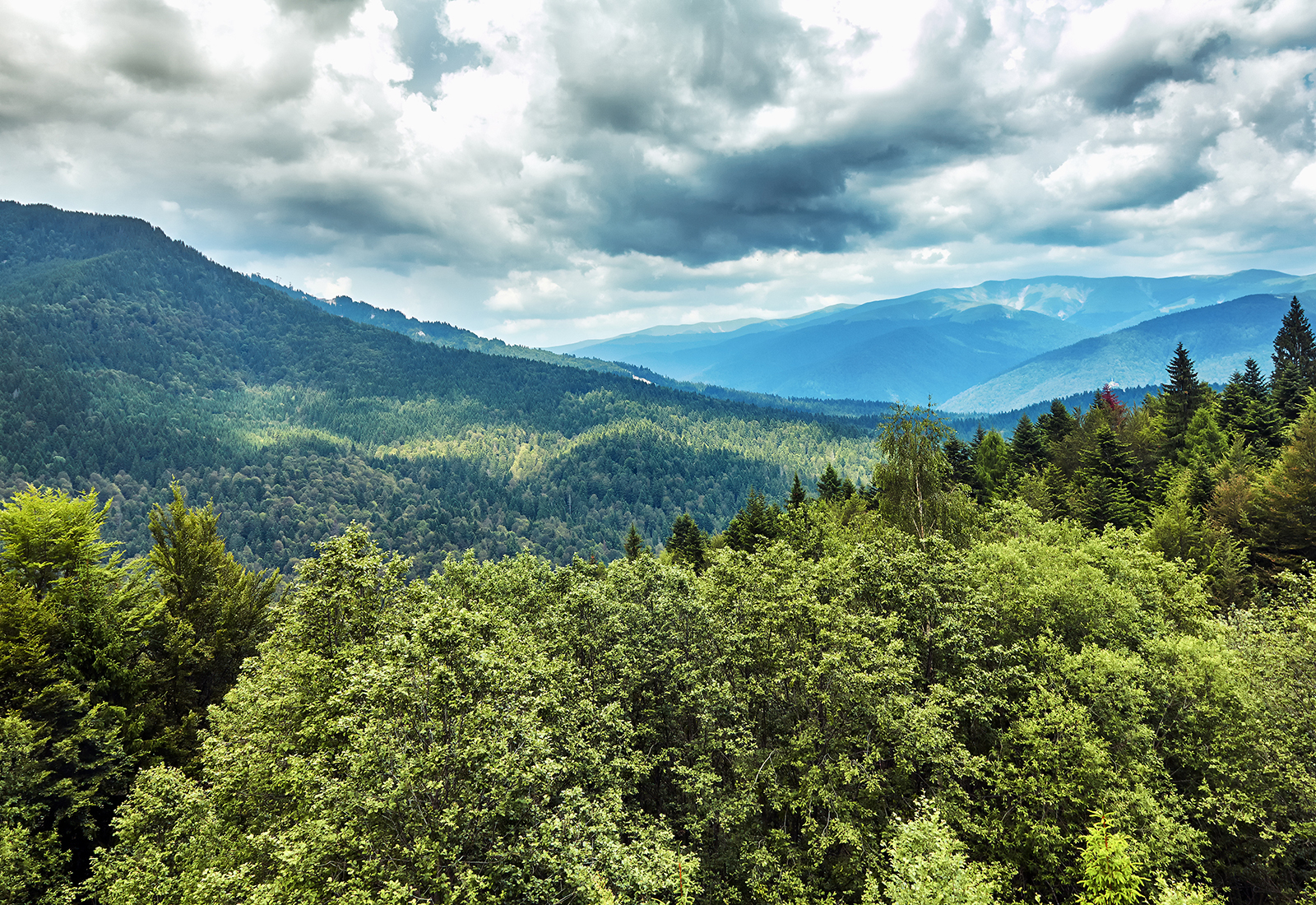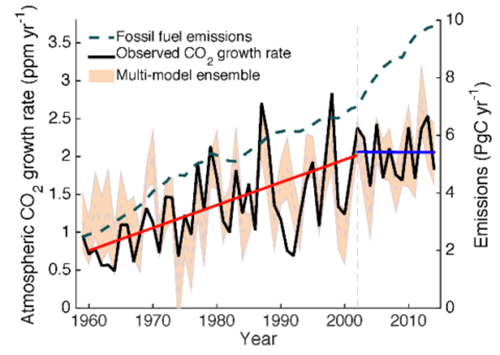
While humans continue to emit more and more carbon dioxide into the atmosphere, the rate at which carbon is accumulating in the atmosphere has steadied in recent years. (Credit: Shutterstock)
An uptick in land-based photosynthetic activity fueled by rising carbon dioxide levels from fossil fuel emissions has led to a stalled carbon dioxide growth rate since 2002.
A new multi-institutional study led by a scientist from the Department of Energy’s Lawrence Berkeley National Laboratory concluded that the rate at which carbon dioxide is accumulating in the atmosphere has plateaued in recent years because the Earth’s vegetation is grabbing more carbon from the air than in previous decades.
Between 2002 and 2014, the rate at which carbon dioxide increased in the atmosphere held steady at about 1.9 parts per million per year, while human activity continues to emit increasing amounts of carbon and the atmospheric concentration of carbon dioxide, now at 400 parts per million, continues to rise.
“This highlights the need to identify and protect ecosystems where the carbon sink is growing rapidly,” Trevor Keenan, a research scientist in Berkeley Lab’s Climate & Ecosystem Sciences Division and the corresponding author of the paper, said in a statement. “Unfortunately, this increase is nowhere near enough to stop climate change.
“We’ve shown the increase in terrestrial carbon uptake is happening, and with a plausible explanation why. But we don’t know exactly where the carbon sink is increasing the most, how long this increase will last, or what it means for the future of Earth’s climate.”
Along with fossil-fuel emissions, scientists also identified plant respiration, a process in which plants use oxygen and produce carbon dioxide did not increase as quickly as photosynthesis in recent years as another factor in the stalled growth rate.
This is attributed to plant respiration being sensitive to temperature and it was affected by a recent slowdown in global warming that was observed most significantly over vegetated land. So between 2002 and 2014 plants took in more carbon dioxide through photosynthesis, but did not “exhale more into the atmosphere through respiration.
“These changes decreased the amount of anthropogenic CO2 that stays in the atmosphere, and thus slowed the accumulation of atmospheric CO2,” Keenan added.
The growth rate of atmospheric carbon dioxide increased from 0.75 ppm/year in 1959 to 1.86 ppm/year in 2002. However, Keenan and colleagues observed an inflection point when they analyzed the latest data because the slight increase since 2002 occurred as human activity pumps more and more carbon into the atmosphere.
After ruling out oceans as a dominant cause because most computer models agree the amount of carbon taken in by oceans has increased in recent years, scientists quickly turned to terrestrial ecosystems.
The study is based on extensive ground and atmospheric observations of carbon dioxide satellite measurements of vegetation and computer modeling. They used 10 “global dynamic vegetation models” that predict how the terrestrial carbon cycle as well as a model that incorporates satellite measurements of vegetation cover and plant activity to predict global photosynthesis and respiration

This graph shows the same data with one addition: The dashed line shows fossil fuel emissions, which explains why climate change remains a big problem despite the recent pause in the growth rate of atmospheric carbon dioxide. (Credit: Berkeley Lab)




